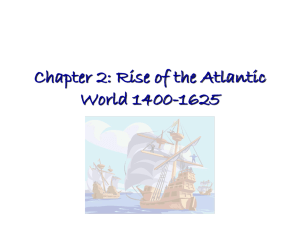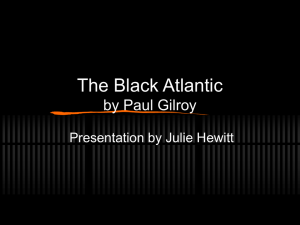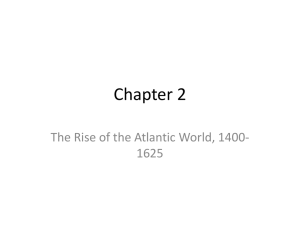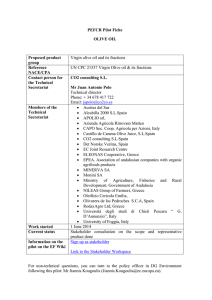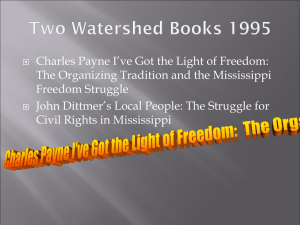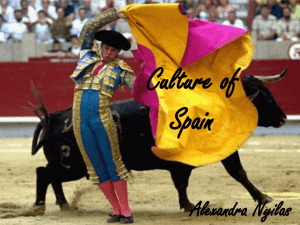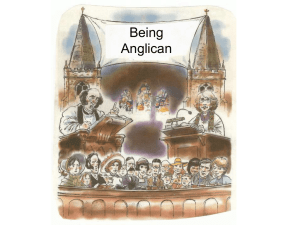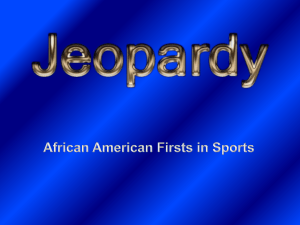Regular PowerPoint - Bremerton School District
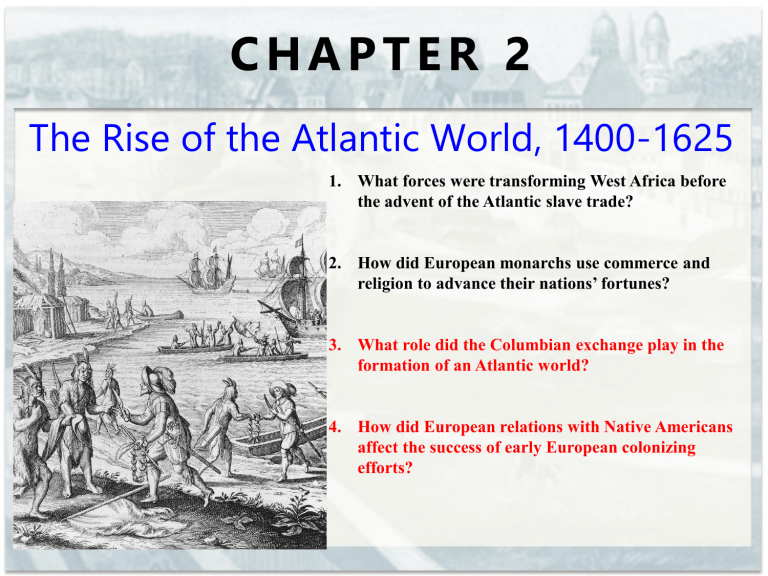
C H A P T E R 2
The Rise of the Atlantic World, 1400-1625
1.
What forces were transforming West Africa before the advent of the Atlantic slave trade?
2.
How did European monarchs use commerce and religion to advance their nations’ fortunes?
3.
What role did the Columbian exchange play in the formation of an Atlantic world?
4.
How did European relations with Native Americans affect the success of early European colonizing efforts?
African and European Backgrounds
West Africa: Tradition and Change
During the 14 th and early 15 th centuries, Mali (capital city:
Timbuktu) was the leading power in the West African savanna
This is a poem by Taylor Mali:
African and European Backgrounds
European Culture and Society
From this: to this:
From this: to this:
African and European Backgrounds
From this:
European Culture and Society
to this:
The Enclosure Movement resulted in massive overcrowding in the cities.
African and European Backgrounds
Religious Upheavals
THE PROTESTANT REFORMATION
(appealed to the poor and middling classes… NOT the rich)
MARTIN LUTHER
JOHN CALVIN
African and European Backgrounds
The Reformation in England, 1533-1625
Henry VIII (1509-1547): Created the Anglican Church (Church of England)
Edward VI (1547-1553): Calvinist
African and European Backgrounds
The Reformation in England, 1533-1625
Mary I (1553-1558): Catholic
Elizabeth I
(1558-1603):
Protestant
(mostly)
James I (1603-1625): Anglican (disliked Puritans)
African and European Backgrounds
The Reformation in England, 1533-1625
Separatists
Appealed to middling classes
PURITANS vs.
Non-separatists
Appealed to middling classes
Calvinists
Disapproved of many Catholic and
Anglican beliefs (i.e. church hierarchy)
Wanted to separate from the Anglican church
Calvinists
Disapproved of many Catholic and
Anglican beliefs (i.e. church hierarchy)
Wanted to purify the Anglican church from within
Europe and the Atlantic World,
1400-1600
Portugal and the Atlantic, 1400-1500
Portugal, under the leadership of
Prince Henry the Navigator, led the way in European long-distance oceanic explorations
Caravel (ship)
Magnetic Compass
Astrolabe (early GPS system)
New, improved maps
Looking to trade or raid
Unintentional consequence…
Europe and the Atlantic World,
1400-1600
The “New Slavery” and Racism
Existing Slavery
“New” Slavery
Due to indebtedness or POW - Became a prosperous business
- Absorbed into the family or released after paying off the debt
- Worked laboriously until death
- Not overly huge in numbers
- Not often tied to religion
- Unprecedented magnitude of slaves
- It became a Christian duty to own slaves
- Race became a HUGE factor - Race was not a factor
- A PERSON - DEHUMANIZED PROPERTY
Europe and the Atlantic World,
1400-1600
To the Americas and Beyond, 1492-1522
Europe and the Atlantic World,
1400-1600
Spain’s Conquistadors, 1492-1536
Christopher Columbus
What many Americans perceive about Columbus…
• He was Spanish
• He was the first to propose that the world was round
• He discovered America
• He discovered America
• He was friendly to the “Indians”
• He was famous
• He became rich
Europe and the Atlantic World,
1400-1600
Spain’s Conquistadors, 1492-1536
Christopher Columbus
What many people didn’t learn about Columbus…
•
He was Italian (Genoese)
•
He never reached the mainland of North or South America
• He didn’t discover America as much as he ran into a land mass that was already occupied
•
He died poor and fairly unknown
• He was “America’s” first slave trader (Taino Indians followed by black Africans)
• He was responsible for “America’s” first gold rush
• He was possibly “America’s” first
Christian missionary
Europe and the Atlantic World,
1400-1600
Spain’s Conquistadors, 1492-1536
Hernán Cortés
Conquered the Aztec Empire
Francisco Pizarro
Conquered the Inca Empire
Both were extremely brutal men
Central Mexican population in 1519:
13-25 million
Central Mexican population in 1600:
700,000
Used surprise and better weapons, but mostly… SMALLPOX to cultivate the greatest demographic disaster in world history!
Europe and the Atlantic World,
1400-1600
The Columbian Exchange
Footholds in North America,
1512-1625
Spain’s Northern Frontier
Hernando de Soto
He went looking for…
GOLD
He didn’t find any, however he pretty much wiped out the
Mississippian Native
American population with diseases whilst exploring
Footholds in North America,
1512-1625
Spain’s Northern Frontier
Francisco Vásquez de Coronado
He also went looking for gold… the seven cities of gold
He also didn’t find any gold on his explorations
He did, however, make a lot of the Native
Americans dislike the Spanish
Footholds in North America,
1512-1625
Spain’s Northern Frontier
Juan de Oñate
He proclaimed the area of modern day New Mexico for the Spanish.
He was very brutal and enslaved many
Native Americans.
Footholds in North America,
1512-1625
Spain’s Northern Frontier
Saint Augustine, Florida (1565)
North America’s first
PERMANENT EUROPEAN settlement
It was a Spanish military base meant to fend off the English and French. It was also used as a missionary base.
Now it’s a tourist trap
Footholds in North America,
1512-1625
France: Colonizing Canada
Giovanni de Verrazano and Jacques Cartier looked for gold and the NW
Passage… they found neither, but claimed a lot of territory for France
Verrazano
Cartier
Footholds in North America,
1512-1625
France: Colonizing Canada
The French did find their “gold” in the form of…
They became allies with the Huron Indians, and helped them fight their enemies… the Mohawks and other tribes belonging to the
Iroquois Confederacy
Quebec (1608) established by Samuel de Champlain
Footholds in North America,
1512-1625
England and the Atlantic World, 1558-1603
Like everyone else, the English were looking for the NW Passage and gold.
Like everyone else, they didn’t find either of them. So, sea dogs (like
Francis Drake) started to raid Spanish fleets and ports (pirates). When the
English defeated the Spanish Armada (1588) it allowed them to focus more on the New World.
Walter Raleigh attempted a permanent colony at
Roanoke, however, when he returned he found that all the colonists were gone. All that was left was…
Footholds in North America,
1512-1625
Failure and Success in Virginia, 1603-1625
A joint-stock company, the Virginia Company of London, went looking for gold. In so doing, they created the first permanent ENGLISH settlement in
Jamestown, Virginia Colony (1607)
Footholds in North America,
1512-1625
Failure and Success in Virginia, 1603-1625
John Smith Pocahontas John Rolfe
Saved the colony with his policy of “He who does not work, shall not eat.”
Saved the colony with her convincing her father, the Chief, to feed the starving colonists.
Saved the colony with his salable variety of tobacco.
Footholds in North America,
1512-1625
Failure and Success in Virginia, 1603-1625
• Headrights greatly helped to increase the population
•
50 acres to whomever paid their transportation
• So… the RICH people paid the way for many indentured servants to come to Jamestown, and the RICH folks got huge tracts of land
• Most of the indentured servants died before their service (usually
4-7 years) was over
Footholds in North America,
1512-1625
New England Begins, 1614-1625
The Peanuts Gang actually does a fairly good job of telling the story… up until the part where the colonists start mistreating the Indians.
Footholds in North America,
1512-1625
A “New Netherland” on the Hudson, 1609-1625
The Dutch explorers (who hired the Englishman, Henry Hudson) claimed much of the Hudson River and the SW tip of Manhattan Island in modern day New York. They also made fur their main focus. They allied themselves with the Iroquois Nations, especially the Mohawks who were enemies of the
Huron Indians
(who were allies with the French.
